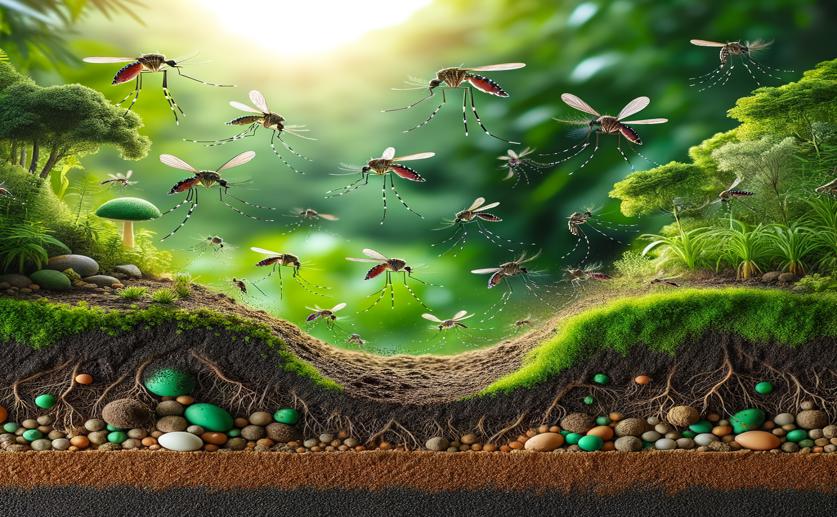
How Soil Affects Growth and Egg-Laying in Mosquitoes
Jim Crocker
25th March, 2024

Image Source: Natural Science News, 2024
Key Findings
- Study from Washington State University found clay loam soil boosts mosquito larva survival and growth
- More soil volume in water also led to longer larva survival
- Organic matter lessened soil type impact on larva development and adult egg-laying preferences
AgricultureEcologyAnimal Science
References
Main Study
1) Effects of soil on the development, survival, and oviposition of Culex quinquefasciatus (Diptera: Culicidae) mosquitoes.
Published 24th March, 2024
https://doi.org/10.1186/s13071-024-06202-y
Related Studies
2) The Influence of the pH and Salinity of Water in Breeding Sites on the Occurrence and Community Composition of Immature Mosquitoes in the Green Belt of the City of São Paulo, Brazil.
3) Manure and mosquitoes: life history traits of two malaria vector species enhanced by larval exposure to cow dung, whilst chicken dung has a strong negative effect.
4) Challenges to Mitigating the Urban Health Burden of Mosquito-Borne Diseases in the Face of Climate Change.



 21st March, 2024 | Jenn Hoskins
21st March, 2024 | Jenn Hoskins